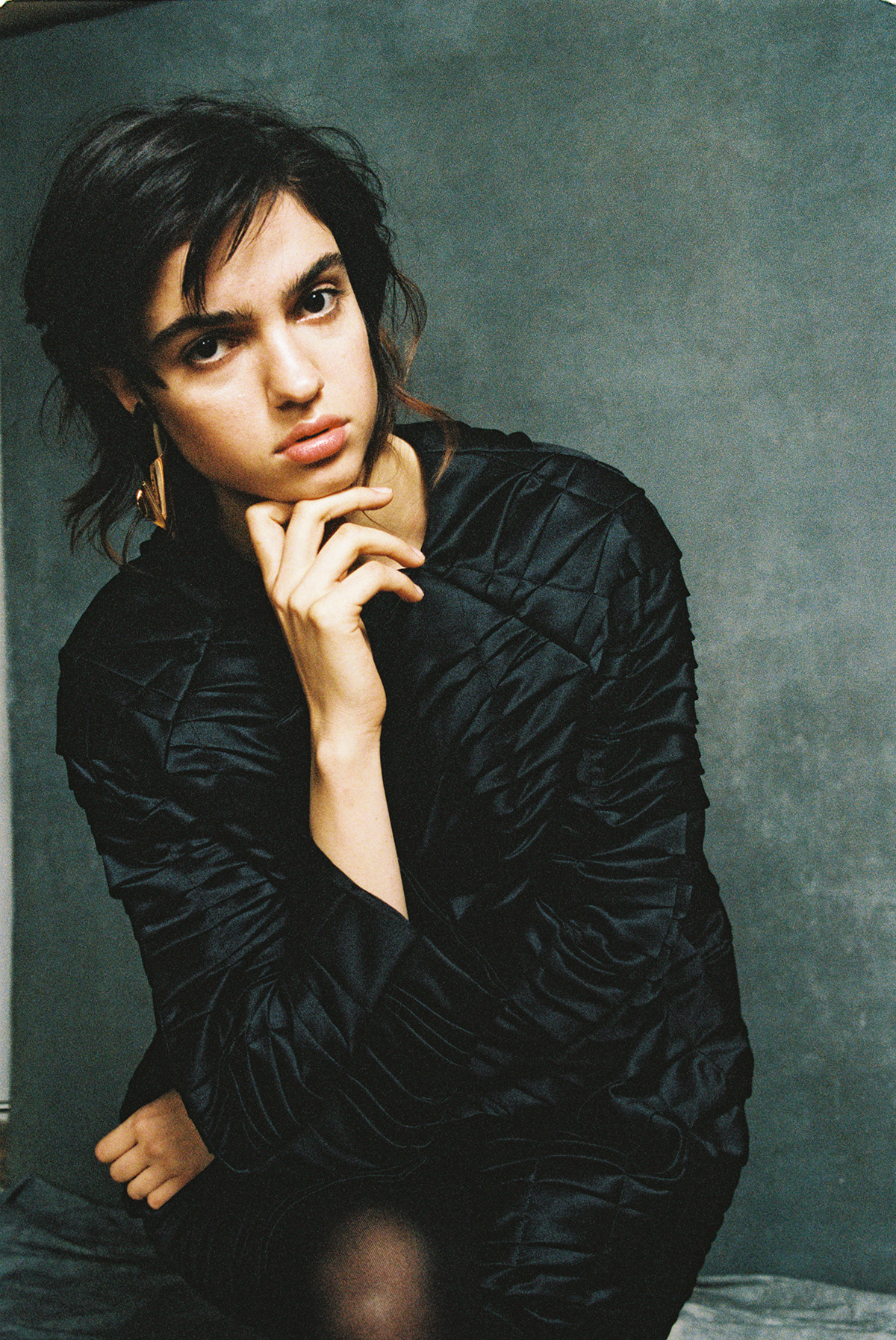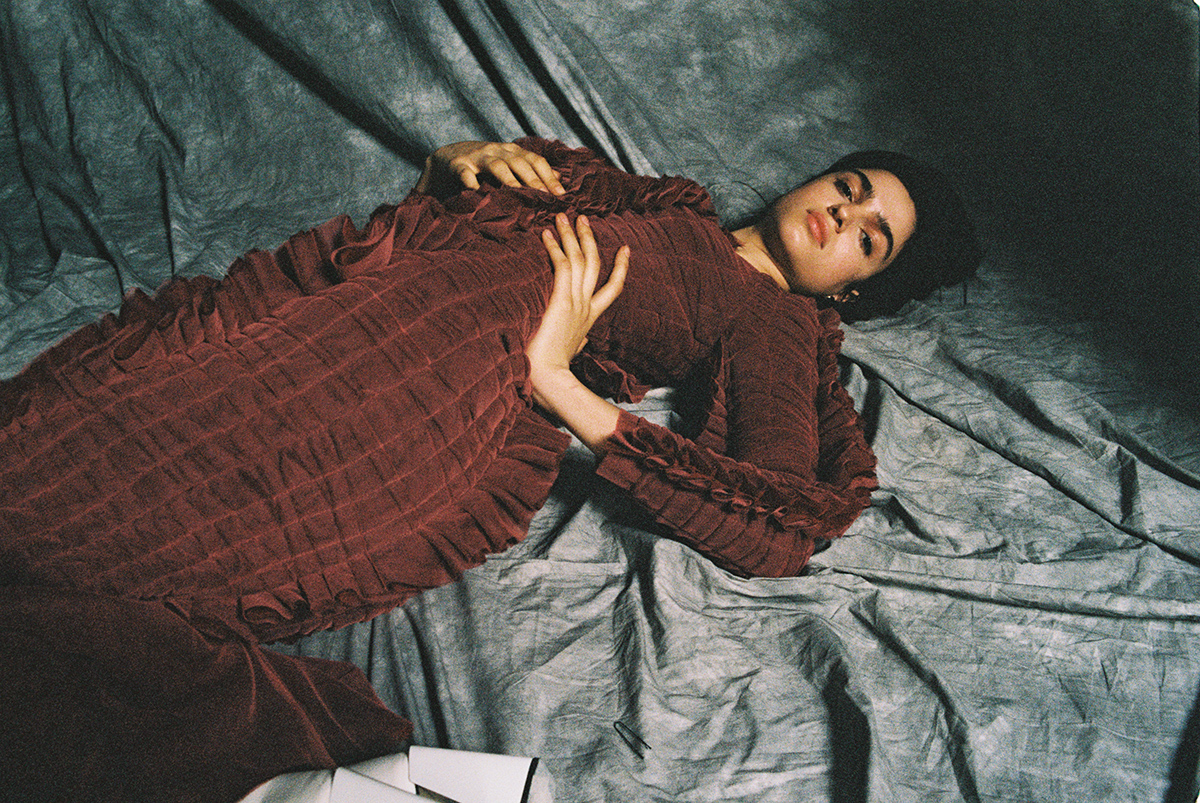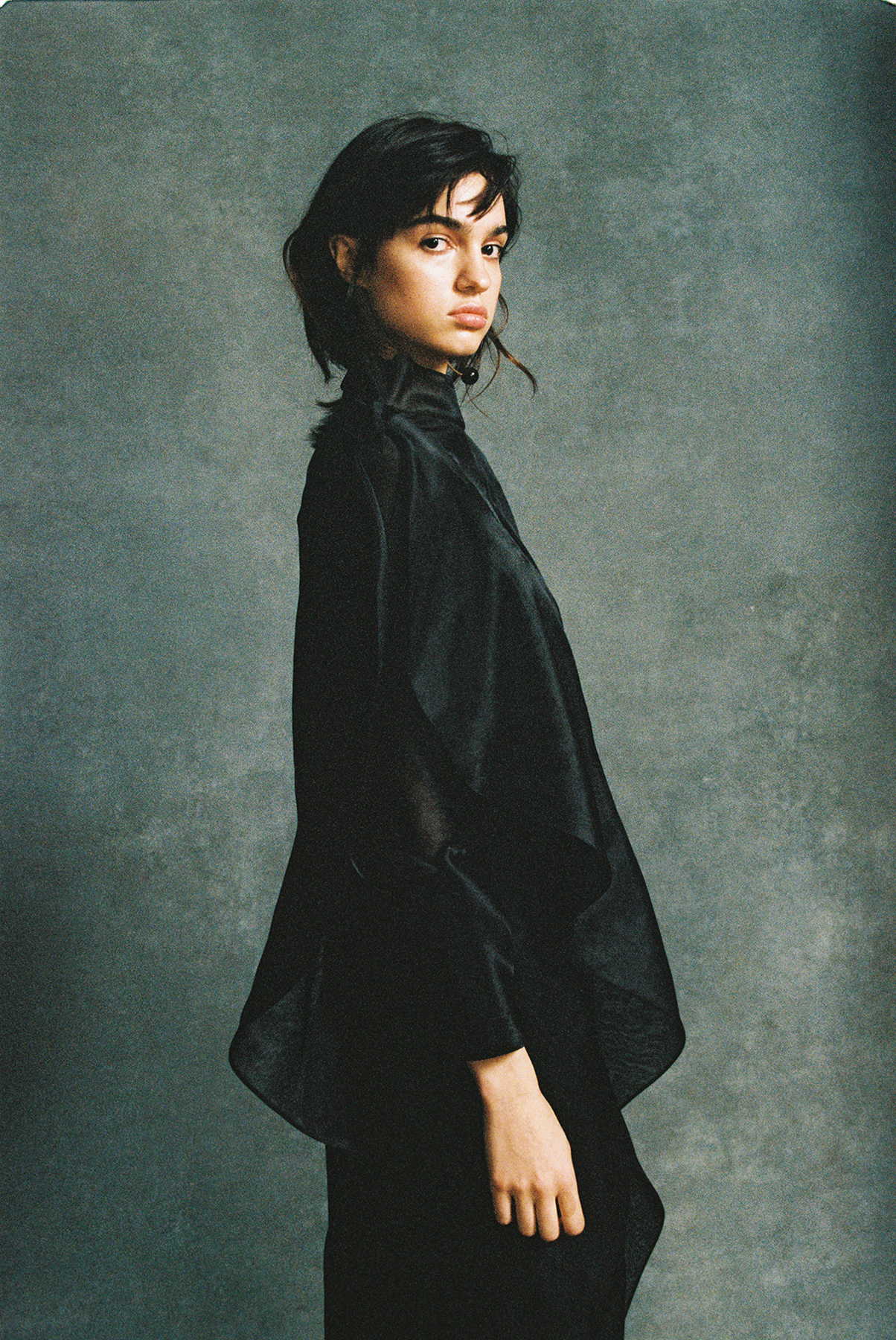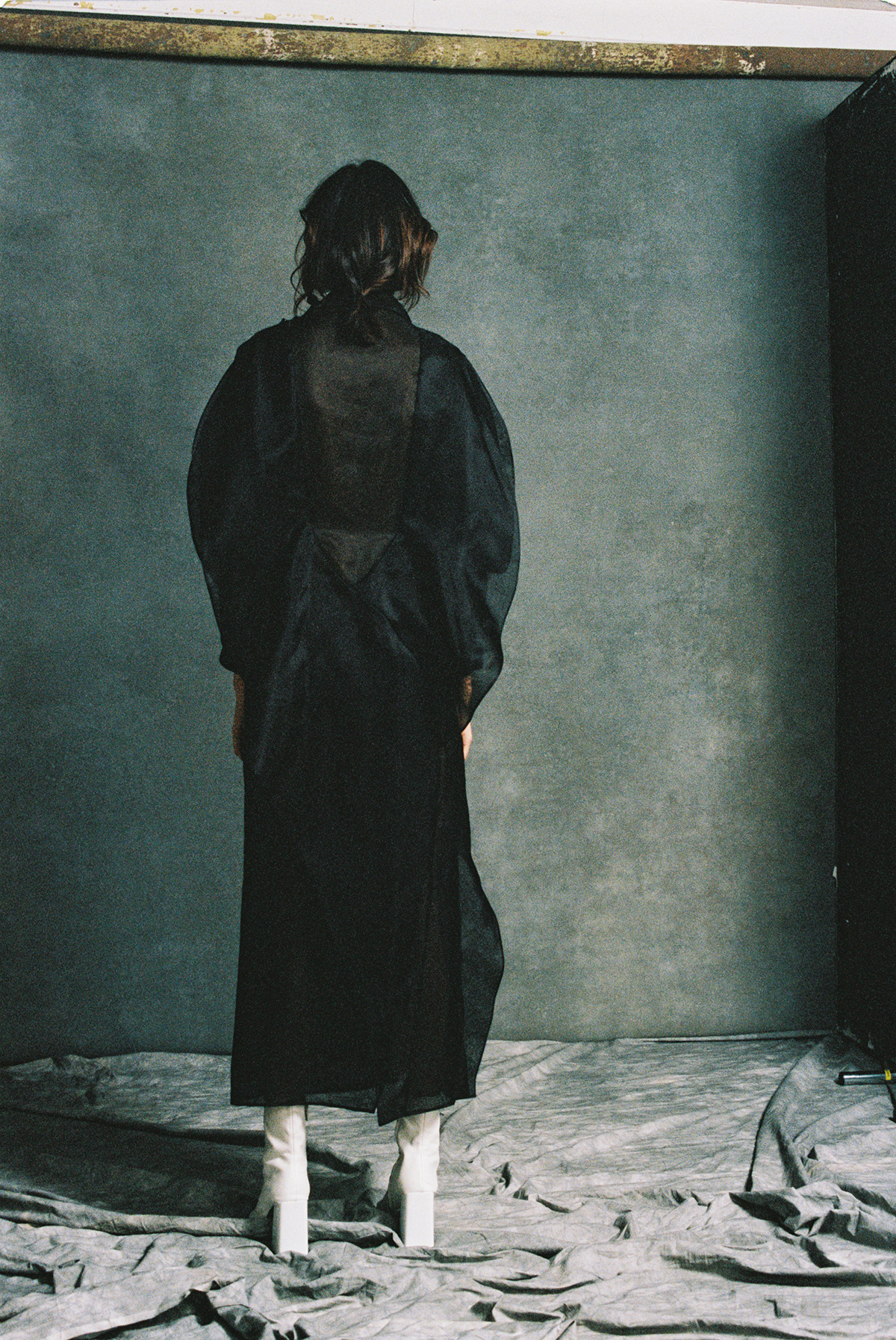The Art Of Layering: An Interview with designer Tugcan Dökmen
Culture — 27.07.18
Photography & Interview: Camilla Sverdrup-Thygeson
Stylist: Yana McKillop
Hair: Declan Haworth at Blue Tit London
Makeup: Megumi Matsuno
Model: Ilana Davies at Models1
Production: It’s LIMIN/ALL
Photography Assistant: Kim Lang

Tugcan Dökmen is the eponymous label of a Turkish-born and London-based womenswear designer who received her BA in Print at Central Saint Martins followed by her MA in Womenswear Design at Royal College of Art. Dökmen primarily works with transparent fabrics, organza and tulle which are her main heroines. Fashion Director Camilla Sverdrup-Thygeson sat down with the designer to learn more about her recent collection.

What art form do you feel influences your creative process the most?
It varies, but recently I read “Mythos” by Stephen Fry, and it resurfaced my interest in ancient Greek stories. I enjoy looking at the paintings about the mythological stories, and I am mostly inspired by the Pre-Raphaelite art, especially the ones from J. W. Waterhouse. There is sadness in them, yet they are very elegant and graceful. The combination of the colour palette and melancholy moves me. I am trying to capture their ephemeral feeling in my work by adding a bit more brightness to my own colour palette.
What was your most recent collection based on?
When I was bringing my recent Resort19 collection together, I spent a day at the library looking at the paintings of nymphs and other mythological stories. I always like the ephemeral aura that most of the pieces possess. I carried on developing my signature layered tulle and organza technique with this soft mood at the back of my mind, through colour combinations and simple, floaty shapes.
Tell me about your working process. How does a collection take shape from inspiration to final product?
It starts with research, an image and an idea that later unravels itself through sampling, testing, and sketching. As a womenswear designer with a printed textile background, I tend to start with fabric manipulation and engineering prints around the body form. Afterwards, I combine them with simple and elegant garments. I enjoy the development process a lot. I love stories, and I listen to audiobooks in the studio all the time while I am working. It gives me energy and making a collection while listening to stories feels like colouring a picture book with the images from the stories I hear.

In what way have your interests culminated in forming your brand?
I love stories in any form, but my favourite kinds are comic books and satire, but I am not sure if you see a direct connection between comics and my work. My brand tends to come out more elegant, dreamy, and fragile than most of my interests. The modern beauty and playful femininity of my brand amazes me.
How do studying and finishing design school compare to becoming a fully-fledged designer in the ‘real world’?
Since graduation, I have been forced to forget everything we were taught in school. They do not prepare you for the commercial side, which is the majority of the business. It doesn’t matter how beautiful your design is, it has to be financially viable first. I feel the general scene is shifting; it is not so much about designing anymore, but styling. Also, I graduated with my MA at RCA only three years ago, but even then Instagram was not a big part of the system. At least, we didn’t care about it, but now it is an essential post-graduation element, and it changed the game. Everything we used to make fun of in CSM and RCA is now being forced on me, like having a “moodboard” or having an Instagram account.
Is design something you always wanted to pursue? How did your path come to fruition?
Yes, since I can remember. My parents are psychology professors, so I tend to over-analyse things. My analysis is that my childhood fixation to become a womenswear designer started when I was trying to figure out which kind of woman I wanted to be. I am an adult now, but I still do not feel like I am the woman I am designing for. Even when I am 50, I assume that this feeling of designing for a future grown-up self will remain. I still look at my designs and the women wearing them and think, “I could be like that when I grow up”. It keeps me going. I have that distance between my work, and myself but I am merging them more and more to create a stronger creative style.

You are known for your layering, what is the most time-consuming piece you’ve created?
The most time-consuming piece I’ve created was a beaded gown from my MA graduate collection. I wanted to make my own body wrapping beads and became interested in 3D modelling. I spent a very long time with modelling the set of 32 beads in the card. Each piece was different with an angle and was placed around the body like a wrapping snake. They were first engineered on the mannequin and later around the scanned body form to get the right fit. I wanted them to have the correct bend to sit comfortably on the curves of the waistline. I lost myself in the world of 3D printing and 3D scanning and learned a bit of Rhino which was okay to explore in an art and design school, but not compatible in the commercial world. Later, I hand-dyed and hand-painted each bead and placed them by stitching between the carefully arranged pleats of the gown. It looked beautiful! Apart from that, SS18 Dalga Coat and Dalga Trousers also took more than a week to hand-layer and cut. But these are my experimental press pieces. Since then, I managed to achieve the same aesthetic with less effort.
Tell me about the process that goes into making your garments?
Layering combined with tender love and care.
You can see more of Tugcan’s work through her website or Instagram.